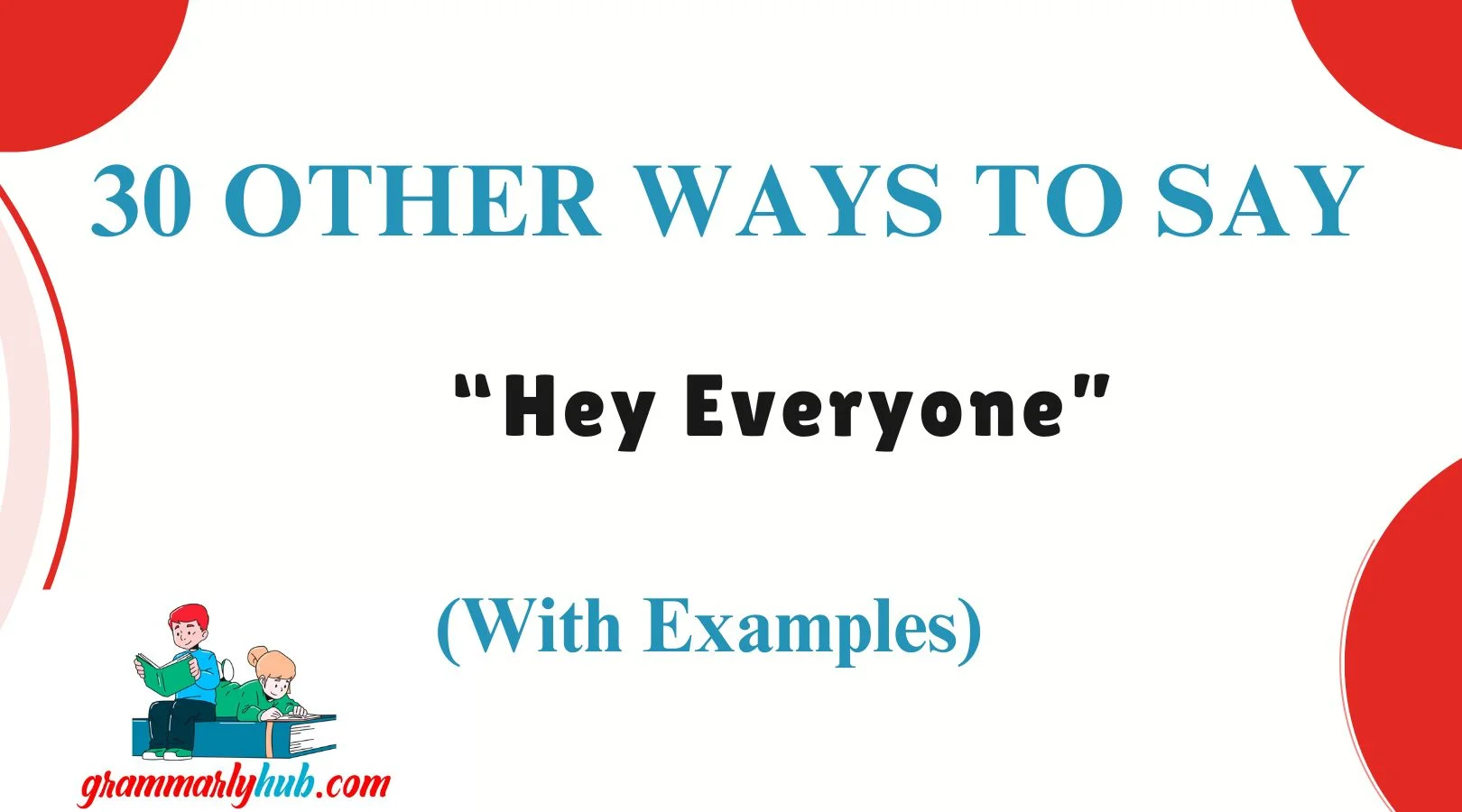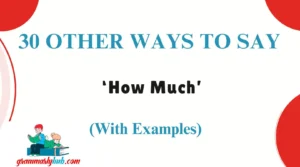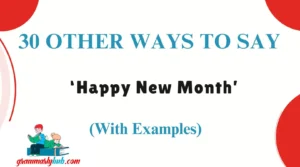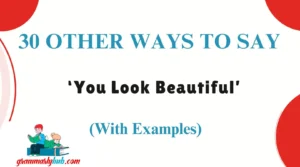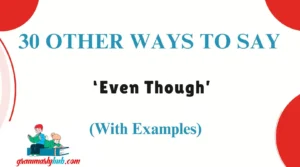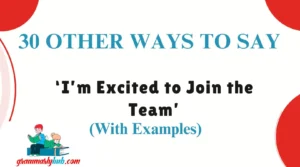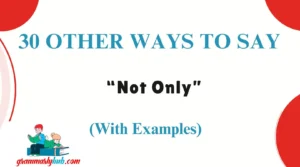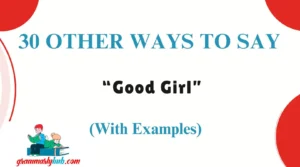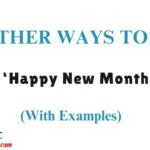Connecting with your audience starts with a greeting. Whether you’re writing an email, addressing a group, or launching a presentation, the way you say “Hey everyone” sets the tone for everything that follows. While “Hey everyone” is friendly and versatile, there are moments where a more thoughtful, professional, or expressive alternative can make your message feel more engaging, inclusive, or appropriate to the setting.
What Does “Hey Everyone” Mean?
“Hey everyone” is a casual group greeting used in both written and spoken contexts. It’s inclusive and friendly, often used to address multiple people in emails, meetings, or social posts. While effective, it can sometimes sound too informal for professional or serious settings.
When to Use “Hey Everyone”
You can use “Hey everyone” when:
- You’re speaking to a familiar group
- The tone is casual or friendly
- You’re starting an announcement, message, or check-in
Avoid it in very formal, client-facing, or academic communications where a more polished greeting is appropriate.
Is It Professional/Polite to Say “Hey Everyone”?
While “Hey everyone” is polite in casual or semi-professional settings, it may not always sound formal enough in:
- Business proposals
- Academic presentations
- Official emails to clients or executives
In these cases, using “Hello everyone,” “Good morning all,” or more polished variants might be better suited.
Pros and Cons of “Hey Everyone”
Pros:
- Warm and welcoming
- Easy to understand and use
- Suitable for internal teams, social groups, or casual audiences
Cons:
- Can seem too casual or generic
- May lack professionalism in formal settings
- Doesn’t reflect tone diversity or cultural nuance
Synonyms For “Hey Everyone”:
- Hello Everyone
- Good Morning, All
- Hi All
- Greetings Everyone
- Hey Team
- Hi Folks
- Hello Friends
- Welcome All
- Good Day Everyone
- What’s Up Everyone
- To All Present
- Dear All
- Hi There, Everyone
- Everyone, Hello
- Good Evening, All
- Hey There
- Hello, Wonderful People
- Hello Team
- Hi Everyone! Hope You’re Well
- To My Amazing Team
- Salutations, Everyone
- Hello Colleagues
- Team, Let’s Begin
- Hey Everyone—Let’s Dive In
- How’s Everyone Doing?
- Greetings, All
- Hello Beautiful Souls
- Dear Team
- Hey Friends
- What’s Going On, Everyone?
1. Hello Everyone
Definition: A universally polite and professional group greeting.
Explanation: “Hello everyone” is ideal in almost any setting—professional, academic, or casual. It keeps the tone respectful while still feeling inclusive.
Example: Hello everyone, thank you for joining today’s strategy meeting.
Worst Use: May feel too stiff in very relaxed, casual environments like group chats or social DMs.
Tone: Professional, inclusive, neutral
2. Good Morning, All
Definition: A polite, time-specific greeting that addresses a group during the morning hours.
Explanation: It’s perfect for emails, meetings, or presentations taking place earlier in the day. It adds a touch of professionalism while remaining warm.
Example: Good morning, all! Let’s begin with a quick update on last week’s numbers.
Worst Use: Not appropriate if it’s not actually morning or if the group spans multiple time zones.
Tone: Courteous, timely, professional
3. Hi All
Definition: A casual and approachable group greeting commonly used in emails or team chats.
Explanation: Less formal than “Hello everyone,” it’s ideal for internal workplace communications or familiar group conversations.
Example: Hi all, just a quick reminder that the deadline is Friday.
Worst Use: Avoid in client-facing emails or formal introductions.
Tone: Friendly, casual, efficient
4. Greetings Everyone
Definition: A slightly more formal or stylized way of saying hello to a group.
Explanation: Works well when you want your greeting to feel warm yet distinguished—suitable for speeches or formal emails.
Example: Greetings everyone, and thank you for attending this evening’s event.
Worst Use: Can sound too old-fashioned or theatrical in a very modern or casual context.
Tone: Elegant, respectful, slightly formal
5. Hey Team
Definition: A casual and enthusiastic greeting used when addressing your work group.
Explanation: Perfect for building camaraderie within a team. It shows friendliness and unity, especially in fast-paced environments.
Example: Hey team! Amazing job on that last project—let’s keep the momentum going!
Worst Use: Not appropriate outside of workplace or team-specific contexts.
Tone: Motivational, casual, team-oriented
6. Hi Folks
Definition: A casual and friendly way to greet a group of people.
Explanation: Common in both spoken and written English, especially in informal newsletters, team messages, or laid-back meetings.
Example: Hi folks! Just a quick update on what’s coming this week.
Worst Use: Might sound too relaxed or rural in formal or urban business settings.
Tone: Warm, casual, approachable
7. Hello Friends
Definition: A warm, inclusive greeting that emphasizes camaraderie.
Explanation: Ideal when addressing a group you’re emotionally close to, like a community, audience, or long-term clients.
Example: Hello friends, I’m so glad we could come together for this special celebration.
Worst Use: Avoid in highly formal professional emails or first-time corporate meetings.
Tone: Affectionate, personal, welcoming
8. Welcome All
Definition: A gracious and neutral greeting suitable for many settings.
Explanation: Often used in public announcements, presentations, or event openings to greet all attendees.
Example: Welcome all! We’re thrilled to have you here today.
Worst Use: Feels impersonal in small, casual groups.
Tone: Gracious, inclusive, formal
9. Good Day Everyone
Definition: A timeless, all-purpose greeting that suits both formal and semi-formal communication.
Explanation: This phrase carries a touch of elegance and works well for global audiences where time-specific greetings (like “Good morning”) might not fit.
Example: Good day everyone, let’s begin our review of the project timeline.
Worst Use: May sound outdated in extremely modern, casual settings.
Tone: Refined, neutral, diplomatic
10. What’s Up Everyone
Definition: A casual, modern greeting that invites energy and engagement.
Explanation: Best used with peers, students, or audiences where an upbeat tone fits—especially in video content or casual team chats.
Example: What’s up everyone! Today we’re diving into five easy ways to improve your productivity.
Worst Use: Avoid in professional emails or serious meetings.
Tone: Energetic, youthful, laid-back
11. To All Present
Definition: A formal greeting that acknowledges everyone in attendance.
Explanation: Common in speeches, meetings, and formal gatherings where respectful acknowledgement is needed.
Example: To all present, thank you for being here today to witness this important milestone.
Worst Use: Feels overly formal or ceremonial in casual emails or team chats.
Tone: Respectful, ceremonial, formal
12. Dear All
Definition: A classic email greeting that addresses a group politely.
Explanation: Often used in professional settings like office memos or academic correspondence.
Example: Dear all, please find attached the agenda for next week’s meeting.
Worst Use: Sounds stiff or impersonal in casual or spoken contexts.
Tone: Polite, formal, clear
13. Hi There, Everyone
Definition: A friendly hybrid between casual and inclusive.
Explanation: Perfect for blogs, group updates, or speaking engagements that balance approach ability and professionalism.
Example: Hi there, everyone! Let’s kick off today’s discussion with a quick poll.
Worst Use: Might be too cheerful for serious news or formal business memos.
Tone: Bright, inviting, casual-professional
14. Everyone, Hello
Definition: A reverse-style greeting with emphasis on the audience first.
Explanation: A slightly more dramatic or stylised version, great for speeches or content creation.
Example: Everyone, hello! I’m so honoured to be speaking with you today.
Worst Use: Uncommon in emails or texts—feels overly preformative in the wrong context.
Tone: Emphatic, dramatic, personal
15. Good Evening, All
Definition: A time-based greeting tailored for evening communication.
Explanation: Use it for formal meetings, webinars, or community messages scheduled after regular business hours.
Example: Good evening, all. Let’s begin with a moment of appreciation for today’s speakers.
Worst Use: Inappropriate if it’s not actually evening for the recipients.
Tone: Polished, timely, respectful
16. Hey There
Definition: A breezy, informal greeting perfect for casual audiences.
Explanation: Best used in newsletters, clogs, or internal team updates.
Example: Hey there! Just wanted to check in and share a few new updates.
Worst Use: Too casual for client-facing or formal settings.
Tone: Relaxed, cheerful, friendly
17. Hello, Wonderful People
Definition: A warm and affirming group greeting.
Explanation: Ideal when building rapport with a community, audience, or team you appreciate.
Example: Hello, wonderful people! Thank you for being such an amazing group to work with.
Worst Use: Can sound too sentimental in strictly professional environments.
Tone: Heartfelt, warm, encouraging
18. Hello Team
Definition: A direct and team-specific greeting.
Explanation: Best used in internal communications when addressing coworkers or collaborative groups.
Example: Hello team! Please review the updates before tomorrow’s check-in.
Worst Use: Avoid with external audiences or unfamiliar recipients.
Tone: Supportive, goal-focused, collaborative
19. Hi Everyone! Hope You’re Well
Definition: A caring, inclusive greeting that adds a personal touch.
Explanation: Ideal for email openings where connection matters more than formality.
Example: Hi everyone! Hope you’re well. I wanted to follow up on the meeting agenda.
Worst Use: Avoid when the subject is urgent or somber.
Tone: Compassionate, friendly, personal
20. To My Amazing Team
Definition: A warm, motivational greeting that builds morale.
Explanation: Perfect for internal memos, team newsletters, or leadership check-ins.
Example: To my amazing team—thank you for your incredible effort this week.
Worst Use: Sounds overly emotional in formal or general group emails.
Tone: Inspirational, grateful, positive
21. Salutations, Everyone
Definition: A quirky, slightly formal greeting.
Explanation: Works when you want to stand out with a unique or stylized tone, especially in creative writing or branding.
Example: Salutations, everyone! Let’s explore some big ideas together.
Worst Use: Feels outdated or awkward in business emails or modern conversations.
Tone: Playful, distinct, creative
22. Hello Colleagues
Definition: A professional greeting specifically for workplace communication.
Explanation: Use when writing memos, newsletters, or announcements to coworkers.
Example: Hello colleagues, please review the updated protocols before Friday.
Worst Use: May sound too stiff for relaxed internal chats.
Tone: Professional, neutral, workplace-friendly
23. Team, Let’s Begin
Definition: A proactive group greeting that signals the start of something.
Explanation: Great for meetings, coaching sessions, or progress reviews.
Example: Team, let’s begin with the weekly status check.
Worst Use: Lacks warmth if you haven’t greeted them yet—use alongside a greeting, not instead of it.
Tone: Focused, directive, motivational
24. Hey Everyone—Let’s Dive In
Definition: A dynamic greeting that adds action to the welcome.
Explanation: Suited for virtual presentations, online courses, or team huddles.
Example: Hey everyone—let’s dive in and explore today’s key takeaways.
Worst Use: May sound rushed or informal in serious settings.
Tone: Energetic, engaging, fast-paced
25. How’s Everyone Doing?
Definition: A conversational greeting that opens with a question.
Explanation: Great for breaking the ice and building rapport before diving into content.
Example: How’s everyone doing? It’s great to see so many of you joining us today.
Worst Use: May derail focused or structured meetings.
Tone: Friendly, relatable, check-in
26. Greetings, All
Definition: A general, formal way of greeting a group.
Explanation: Works in writing and public speaking when formality is needed.
Example: Greetings, all. Let’s begin our session with introductions.
Worst Use: May feel distant or generic in small groups.
Tone: Respectful, structured, broad
27. Hello Beautiful Souls
Definition: A spiritual or expressive greeting meant to uplift.
Explanation: Ideal for wellness circles, creative communities, or motivational spaces.
Example: Hello beautiful souls! Let’s take a moment to ground ourselves before we begin.
Worst Use: Inappropriate in corporate or pragmatic work settings.
Tone: Uplifting, spiritual, sincere
28. Dear Team
Definition: A balanced professional greeting.
Explanation: Best used in written updates, leadership communication, or progress emails.
Example: Dear team, I appreciate everyone’s effort on this quarter’s results.
Worst Use: Feels too impersonal for creative or emotional moments.
Tone: Respectful, businesslike, motivational
29. Hey Friends
Definition: A relaxed, intimate greeting perfect for communities and followers.
Explanation: Often used in newsletters, podcasts, or video intros where warmth and connection matter.
Example: Hey friends! Let’s talk about what’s been on my heart this week.
Worst Use: Too personal or casual for professional business contexts.
Tone: Personal, caring, community-driven
30. What’s Going On, Everyone?
Definition: A casual, conversational opening line.
Explanation: Fits informal meetings, virtual hangouts, or creative spaces.
Example: What’s going on, everyone? Hope your week is off to a great start.
Worst Use: Avoid formal reports or presentations.
Tone: Casual, relatable, modern
FAQs About Replacing “Hey Everyone”
Is it professional to say “Hey Everyone”?
Yes, in most casual or semi-formal contexts, “Hey everyone” is acceptable. It works well in internal team chats, newsletters, and even presentations with familiar audiences. However, in very formal settings, it’s better to choose a more polished alternative like “Dear All” or “Greetings, All.”
What is the most inclusive alternative to “Hey Everyone”?
“Hello All,” “Hi Everyone,” or “Dear All” are great inclusive options. They don’t make assumptions about relationships or familiarity and are widely accepted across professional and casual environments.
Can I use these alternatives in business emails?
Definitely! Just choose the tone that fits your message. Use “Hello Team” or “Dear Colleagues” for formal emails, and save “Hey Friends” or “Hi Folks” for friendly or informal updates.
Which alternative should I use in a speech or presentation?
Try “To All Present,” “Welcome All,” or “Good Day Everyone”. These options sound polished and are perfect for addressing an audience respectfully.
What if I want to sound warm and personal?
Use alternatives like “Hello Friends,” “Hi Everyone! Hope You’re Well,” or “Hello Beautiful Souls.” These greetings add a sincere and compassionate touch, ideal for community messages, wellness spaces, or personal updates.
Conclusion: Choosing the Right Words Makes All the Difference
Finding the right greeting does more than just start a message — it sets the tone, builds trust, and helps people feel seen. While “Hey everyone” is a popular favorite, choosing alternatives that match your tone, context, and audience can make communication more thoughtful and intentional.
Whether you’re writing an email, leading a team meeting, or speaking to a large audience, a simple phrase like “Hello Friends” or “Welcome All” can carry warmth, professionalism, and inclusion in just a few words.

Welcome to GrammarlyHub, your go-to destination for mastering grammar, improving your writing, and finding the best language tools available online. Founded by Emma Rose, a passionate writer and advocate for clear communication, GrammarlyHub was built to help people express themselves with confidence and accuracy.
